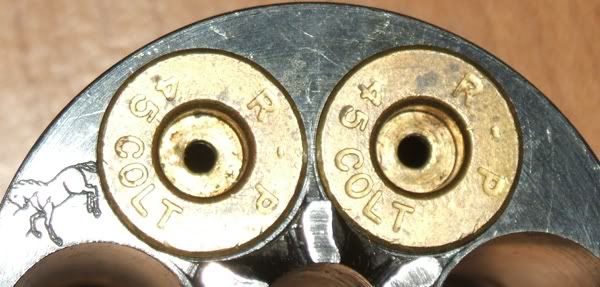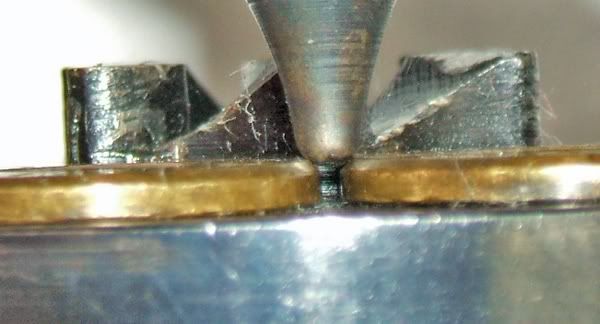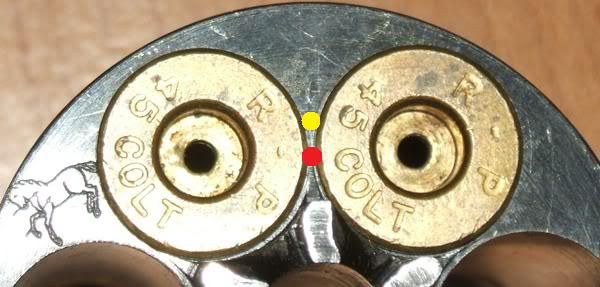Expound, Model-P. What on Earth could it do to your cylinder?
When the hammer is down, the bolt will be against the cylinder.
One thing it doesn't do is give you a drag line.
Ah, tryin' to head me off at the pass. Maybe not a whole turn line, but a nice wear spot between stops. The only way to minimize this would be to have a very underpowered bolt spring, a perfectly polished or rounded bolt head, and you are able to perfectly lower the hammer straight down where you want it every time, and when once down the cylinder does not turn even a fraction of an inch- which it can and most likely will.
To each his own.
Bolt against the cylinder when the hammer is down between cartridge rims:

Furthermore, with .45 Colt this is NOT a safe way to carry to boot---
.025-.030" between rims in a standard .45 Colt cylinder:

But, a typical firing pin runs around .075-.080" and cannot seat between .45 Colt rims, and is easily able to override the rim to the primer without your noticing it:

YMMV

